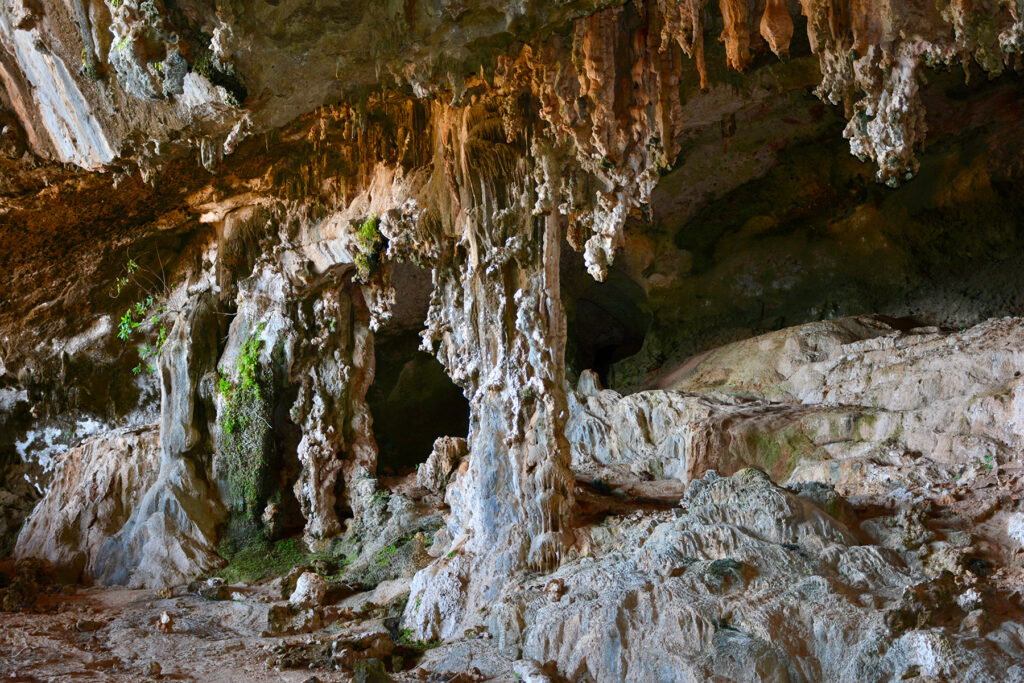Hoq Cave

Socotra has been described as ‘like a Swiss cheese’ because of all the holes and caves in its limestone.
Hoq is a wonderful amalgamation of the standard cave delights of stalagmites and stalactites, with a rich history of early habitation to spike the imagination.
This cave is one of Socotra’s most important archaeological sites and traces the arrival of visitors to Socotra from the 1st century BC up until the 6th century AD.
Throughout Hoq Cave archaeologists have recorded a series of inscriptions, pictograms and artefacts, and at the entrance are examples of some of the later medieval structures and water basins.
The cave is believed to have been a religious sanctuary for mariners visiting the island who wrote their names in Indian Brahmi, South Arabian, Palymyrene and Bactrian scripts.
These scripts were drawn using mud or charcoal and as such are extremely fragile and sensitive to the change that even a single visitor can bring.
To prevent these scripts from being damaged and to preserve them for future generations we ask that all visitors to Hoq Cave do not progress beyond the marked area and refrain from smoking in the cave.
A tour or trip which suits your needs
8-day Classic tour •
15-day Trekking & Socotra's Essentials •
Customized trip
a few ideas for excursions
Bird Watch •
Abd al Kuri Island •
Diving excursions
Sightseeing from a paradise on earth
Delisha •
Homhil Plateau (Nature Sanctuary) •
The Pools of Killisan •
Dihamri Marine Nature Sanctuary •
Wadi Dirhur •
Hoq Cave •
Firmihin Forest •
Zahek Dunes •
Diksam Plateau and Village •
Detwah Beach and Lagoon •
Shu'ab Beach •
Aomak Beach •
Dagub Cave •
Arher Sand Dunes